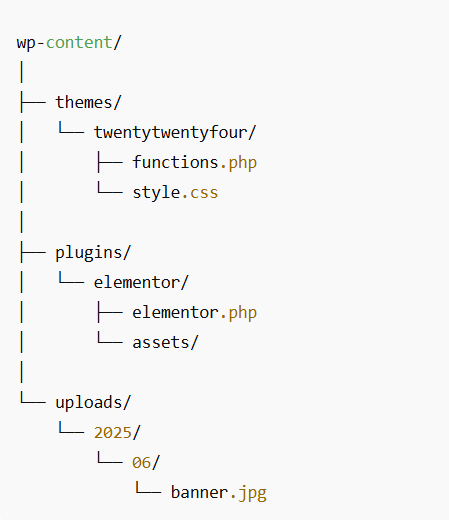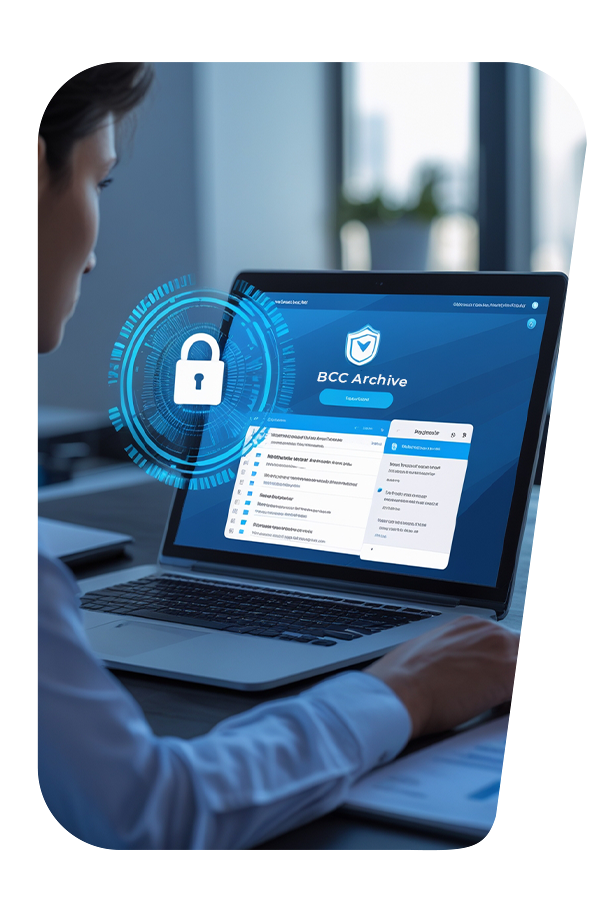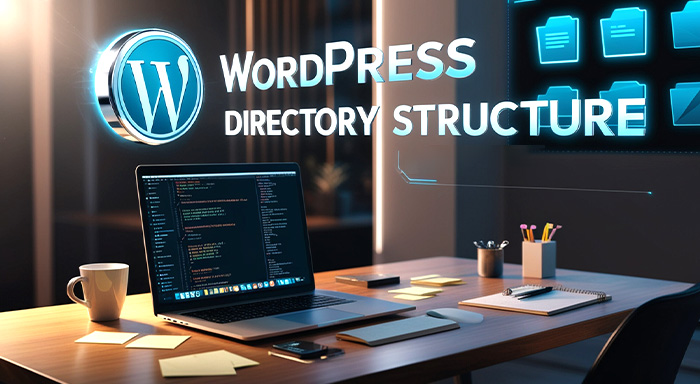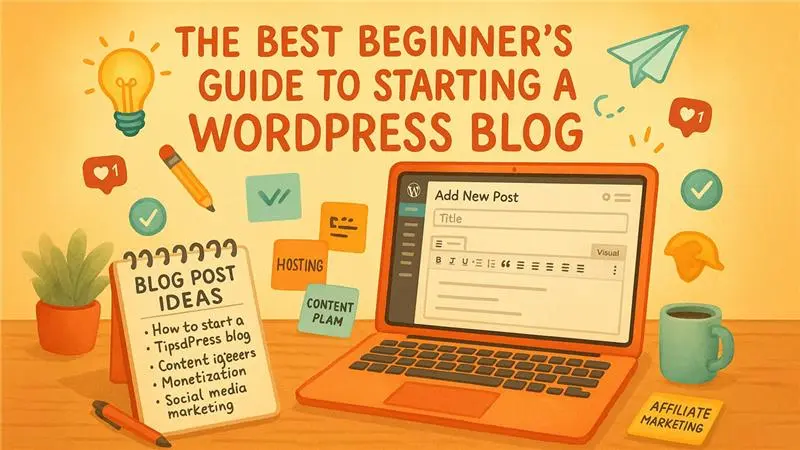When you unzip or install WordPress for the first time, you're faced with a set of folders and files. To a beginner or even an intermediate user, this organization can
When you unzip or install WordPress for the first time, you're faced with a set of folders and files. To a beginner or even an intermediate user, this organization can appear daunting. However, once you know what each directory contains, working on your site becomes a lot easier—and secure.
Let’s take a walkthrough of the WordPress Directory Structure and explore what each directory does—along with some real-life examples of how they’re actually used when managing a site.

1. wp-admin/ – The Brain of WordPress
Consider wp-admin as the control panel for your WordPress site. This is where you do your log in, handle posts, pages, settings, and all the rest. Since this directory contains all of the administrative functionality you’ll require, understanding it is essential to master WordPress setup.
Within wp-admin, there are tools that drive the admin section of your WordPress website. Dashboard files display updates and activity, admin CSS and JS bring style and functionality, settings handlers make changes on your site, and menu management allows you to easily organize navigation. All of these contribute to wp-admin being the central control panel of your website.
At times, users face WordPress admin bar issues when files stored within this directory get corrupted or when plugins interfere with the admin interface. If you are having trouble with your admin bar not showing up properly, this usually relates to theme issues or plugin problems impacting the wp-admin functionality.
Example:
// wp-admin/index.php
require_once( dirname( __FILE__ ) . '/admin.php' ); Unless you're deeply altering admin behavior, which is uncommon, you don't typically edit files here.
2. wp-content/ – The Heart of Customization
You can play here. This is where your theme, plugins, and uploaded media reside, along with everything else that gives your website its individuality. Understanding this part of the WordPress Directory Structure is crucial for any customization work.
Inside wp-content:

Example structure:

Example: Basic functions.php from a theme:
<?php
function mytheme_enqueue_scripts() {
wp_enqueue_style('style', get_stylesheet_uri());
}
add_action('wp_enqueue_scripts', 'mytheme_enqueue_scripts');’3. wp-includes/ – The Core Engine
If the head is wp-admin, then the nervous system is wp-includes. It holds most of the internal functionality—i.e., how posts are fetched, how themes interact with WordPress, database actions, etc.
Key files:
functions.php – Overall WordPress functions.
class-wp-query.php – Manages post queries.
general-template.php – Header/footer and template loading.
Example:
// wp-includes/post.php
function get_post($post = null, $output = OBJECT, $filter = 'raw') {
...
} You should never modify files here unless you’re contributing to core development. Instead, use themes or plugins to extend functionality
Root Directory Files
These are the files in the root directory—where you initially install WordPress. They determine how your site boots. These are the files in the root directory—where you initially install WordPress. They determine how your site boots and are essential elements of the overall WordPress Directory Structure.
Common root files and what they do
Here you are! Here's a concise breakdown of the most important WordPress core files:
- Index.php
Role: Serves as the front controller of WordPress.
- wp-config.php
Role: Links WordPress to your database.
- Htaccess
Role: Manages site URLs, caching, and security rules.
- wp-load.php
Role: Initializes the WordPress environment.
- wp-settings.php
Role: Sets up the environment and plugins.
Example: wp-config.php (snippet)
define( 'DB_NAME', 'your_database_name' );
define( 'DB_USER', 'your_db_user' );
define( 'DB_PASSWORD', 'your_password' );
define( 'DB_HOST', 'localhost' ); This file is crucial. It’s the bridge between WordPress and your MySQL database. Never share this publicly.
Optional/Advanced Directories
There are occasional extra folders you may find, particularly in business or custom installs:
- mu-plugins/ – "Must-use" plugins, automatically loaded.
- languages/ – Manual language files for multilingual functionality.
- upgrade/ – Temporary directory used when updating.
These are not always present unless added by you or a developer.
A Note on Security
Since each folder serves a specific purpose, access must be restricted judiciously:
- Deny wp-includes access through .htaccess
- Do not permit uploads in wp-admin
- Take all media to wp-content/uploads
Pro tip: Employ a plugin such as Wordfence or iThemes Security to guard and watch over key folders.
Summary Table: WordPress Folders & Their Jobs
| Folder | Purpose | Editable or not |
| wp-admin/ | Admin dashboard files | Not recommended |
| wp-content/ | Themes, plugins, uploads | Yes |
| wp-includes/ | Core WP functionality | Never |
| Root files | Bootstraps WordPress | With care |
| uploads/ | Media assets | Yes |
Final Thoughts
The WordPress Directory Structure is not just in case you decide to customize it somewhere down the line. Understanding where things reside allows you to have much more control over performance, security, and custom development.
By being careful not to mess with core folders and having a clue where to adjust (tip: mostly wp-content/), you can build and maintain WordPress sites professionally.





